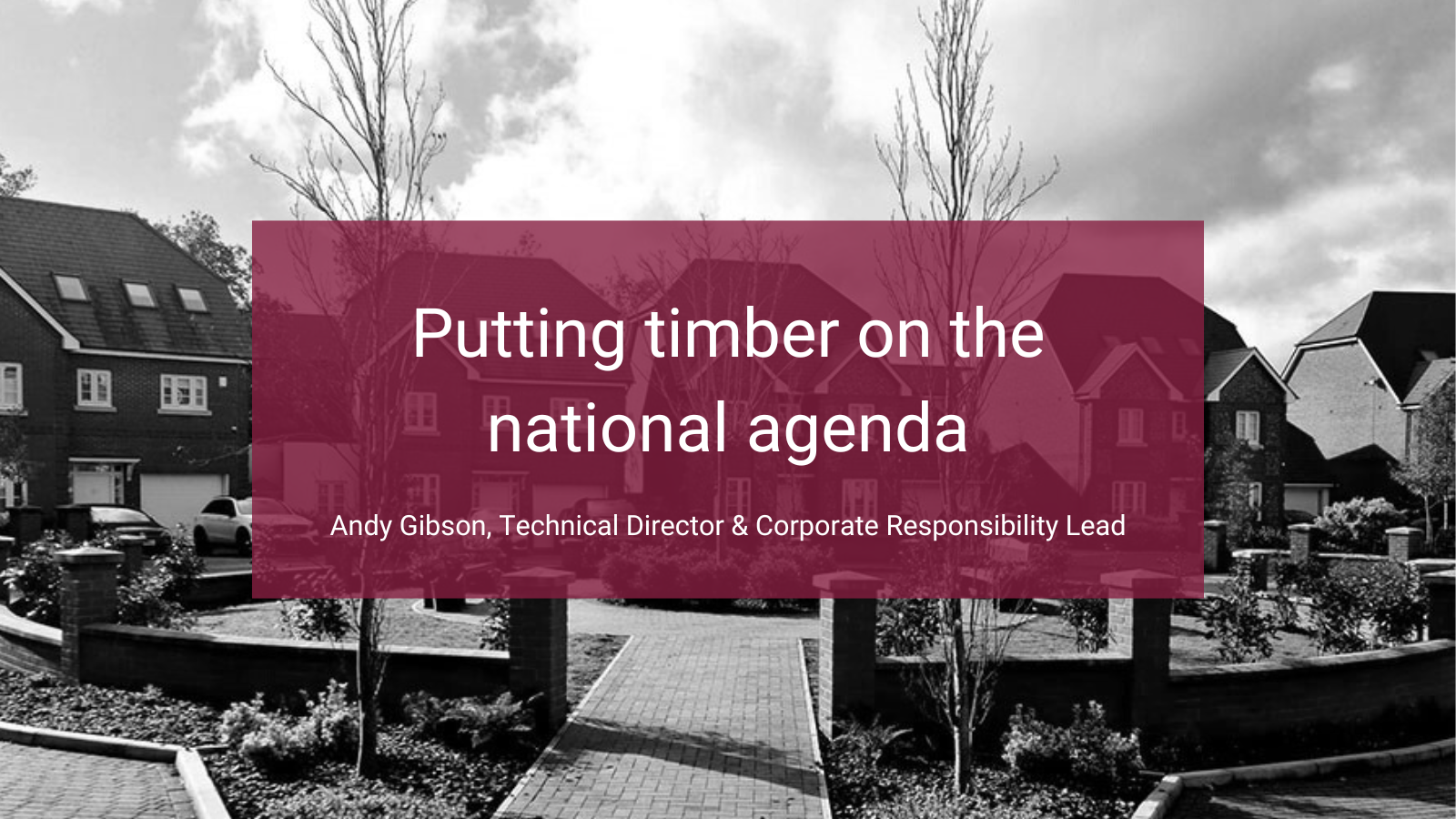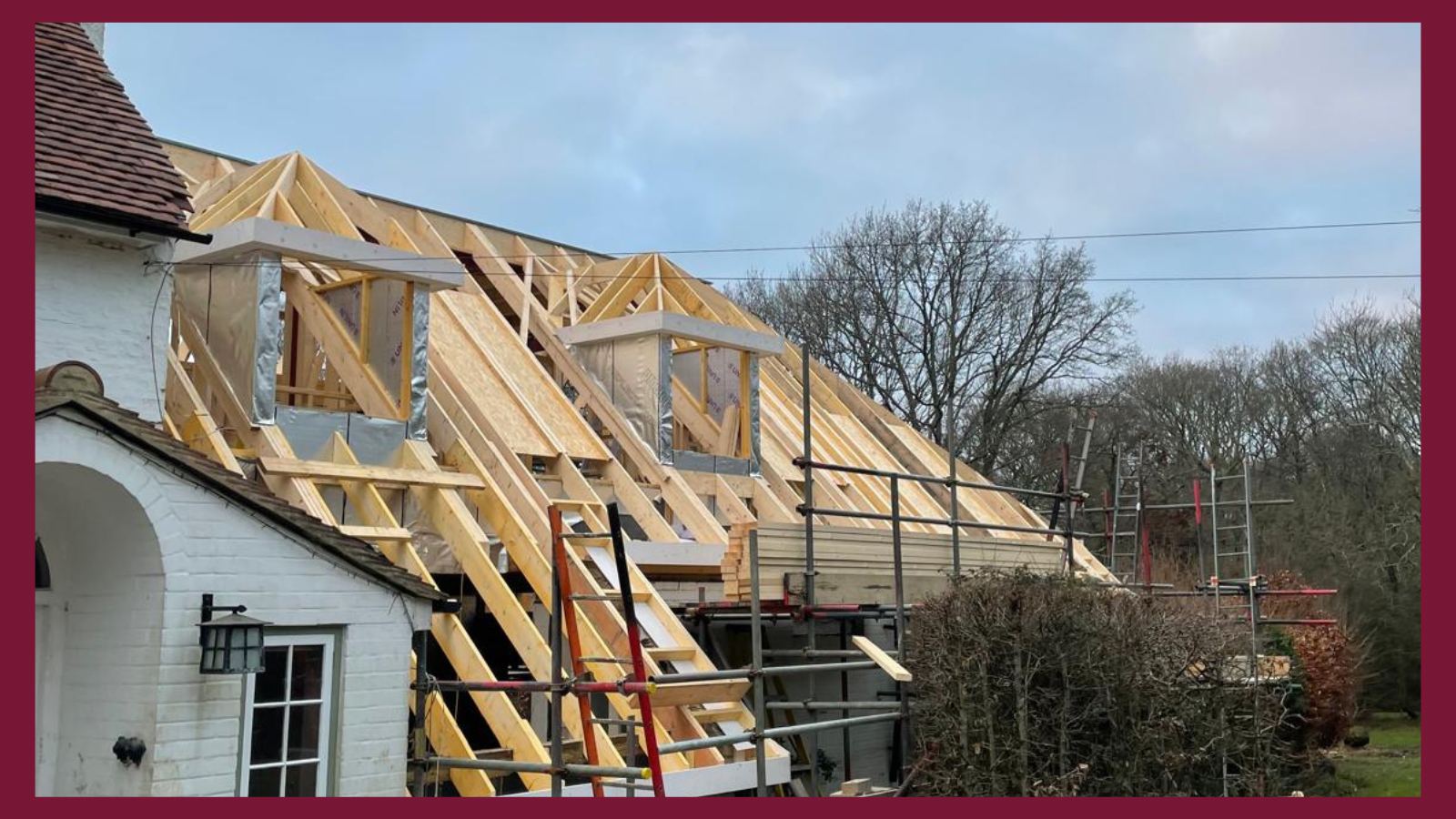Putting timber on the national agenda

The new government has pledged ambitious targets to deliver new and affordable homes; in order for these to be sustainable, timber must play a significant role in their construction.
This is undeniably achievable – in 2019, only 9% of new build homes in England were timber framed, a stark contrast to Scotland where this figure stood at 92% – underlining the vast opportunity to rapidly scale up this industry across the UK.
Overcoming the traditional bias towards masonry buildings is essential, and the Timber in Construction Roadmap, published late last year, highlights why embedding timber buildings into the mainstream UK new build sector is vital to delivering sustainability at scale.

The Timber in Construction Roadmap is a galvanising call to action highlighting timber's vital role in meeting the UK’s Net Zero target. It outlines the opportunities and challenges in delivering on this potential, including the role it can play in driving economic growth and creating new jobs and how the government supports increasing the number of timber-framed homes, public buildings, and offices being built in the future.
Timber-framed homes store about 50% more carbon than masonry homes, emphasising the environmental benefits of increased timber use. Beyond its sustainability credentials, timber-frame construction can revolutionise homebuilding, offering faster delivery of high-quality homes and embracing Modern Methods of Construction (MMC) on a large scale. Engineered wood products such as trussed rafters, floor joists, and timber frame panels are all precision-engineered in a controlled factory environment and manufactured to exacting STA and ISO Quality Assurance standards, which means they offer enhanced quality and safety. This combination of sustainability, safety, quality and faster installation underlines the importance of timber in helping solve the UK’s housing crisis.
To support the expansion of low-carbon timber construction in the UK, the roadmap identifies seven priority areas of work, aiming to accelerate the adoption of this more sustainable material and increase domestic supply.
- Improving data on whole-life carbon: Showcasing the opportunity to reduce embodied carbon emissions in new builds.
- Promoting timber: Educating the construction industry on the sustainability benefits of structural timber.
- Increasing skills: Ensuring a skilled workforce for building with timber.
- Boosting timber supply: Meet the growing demand for timber as a construction material.
- Addressing fire safety: Demonstrating the safety and durability of timber-frame structures.
- Collaborating with insurers and lenders: Educating the insurance and lending sectors about timber.
- Fostering innovation: Supporting innovative and cost-effective timber systems.
Interested in embodied carbon in construction? Discover how timber can lead the way

This shift to timber has widespread support not only from within the timber industry (STA, TDUK) but also from the Royal Institute of British Architects (RIBA), the Royal Institute of Chartered Surveyors (RICS) and the New Model Institute for Technology and Engineering (NMITE), alongside other highly respected organisations from across the construction industry. These organisations are actively engaged in enhancing the construction sector's capability to use timber and deliver on the promises described in the road map.
Looking beyond homes – timber innovation across the built environment:
Public sector projects like the Department for Education's Gen Zero initiative, which has developed a prototype ultra-low carbon classroom using UK-sourced and manufactured timber products, showcase how this can go beyond homes and how timber can be used to sustainably transform how we live, study, and work.
The fantastic use case offered by the New Model Building research project outlines a set of principles and guidance for the design and construction of multi-storey mass-timber buildings that adhere to the UK’s new fire safety regulations. This is an exciting example that will encourage adoption by commercial and mixed-use developers.
Education and collaboration to improve awareness and understanding:
Large industry bodies are vital in supporting the development of construction skills and understanding of carbon calculations and changing the perceptions around the safety of timber.
RIBA is driving the use of timber, running industry events, and supporting research and education. Its 2030 Climate Challenge educates participants on reducing embodied carbon through the use of low-carbon materials – and strongly emphasises the potential of timber. RIBA is also supporting efforts to re-educate developers and insurers on the risks, including publishing its own Mass Timber Insurance Playbook to help educate the industry.
Alongside this, other institutions working on skills, capacity, and competence include NMITE, which launched a Sustainable Built Environment BSc to ‘equip people with a deeper insight into timber construction’, and RICS, which has launched guidance on whole-life carbon assessment (WLCA) for the built environment.
Major UK housebuilders are already spearheading this shift:
Investment by the largest companies in acquiring timber frame manufacturers highlights that they recognise this is vital to future success.
- Persimmon’s upcoming Space4 timber frame factory in Loughborough, set to produce units for 7,000 homes annually, exemplifies this trend.
- Barratt Homes’ acquisition of Oregon, one of the UK’s largest timber frame manufacturers.
- Vistry Group’s reopening of a timber frame plant highlights the industry’s commitment.
But to deliver this shift to timber across the new-build industry, independent timber frame companies have a vital role to play—offering competitive and innovative services and supporting the required education and training.
Read our recent article to learn more about the importance of education: Focus on collaboration and skills to deliver a more sustainable construction industry

The increased use of structural timber presents an exciting opportunity to transition towards a low-carbon approach to building our homes and communal spaces. Combining sustainability, speed, and safety, timber is key to delivering the government's ambitious house-building targets and ensuring the construction industry helps meet the UK’s net zero targets.
It is achievable, as demonstrated by the many use case examples – from Scottish new builds to the potential of multi-storey mass-timber buildings. Broad industry support underscores timber's potential to transform sustainable building practices.
Delivering this must be supported by robust data and comprehensive training driven by collaboration across the construction industry. Alongside this, continued cooperation between government and industry will be vital to ensuring regulatory support for timber adoption.


